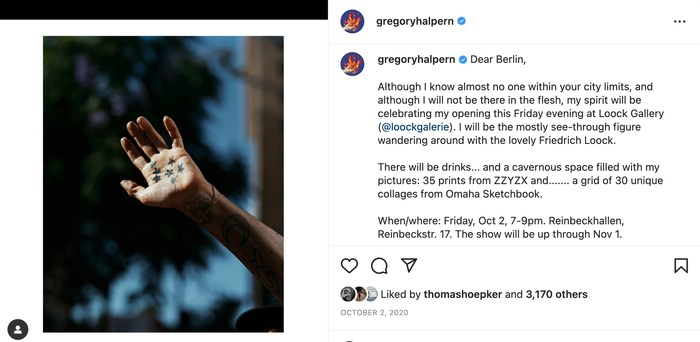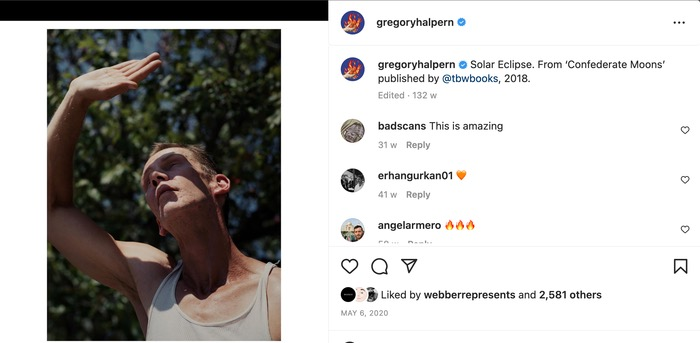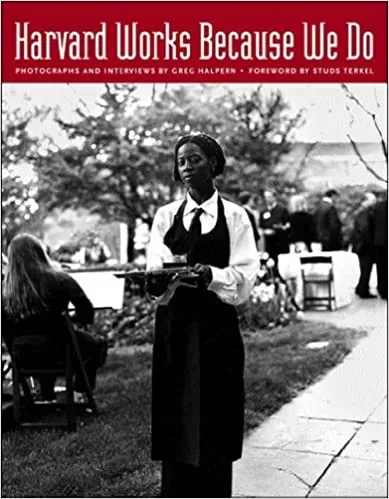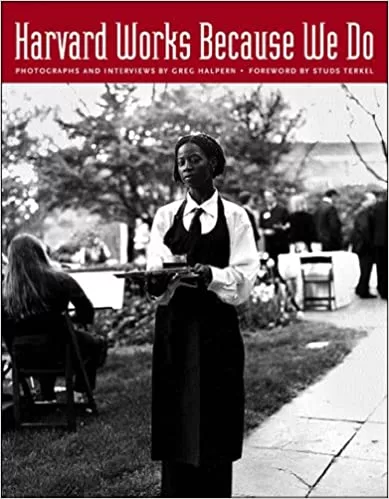Gregory Halpern, born 1977 in Buffalo, New York, is an American photographer who has taught photography at the Rochester Institute of Technology for more than ten years. He received a Guggenheim Fellowship in 2014, and became a Magnum Photos nominee member in 2018, and uses that agency for editorial and commercial work. (1)
Halpern holds a BA in History and Literature from Harvard University and an MFA from California College of the Arts.
“Gregory Halpern is known for his intuitively rich colour photography that draws attention to harsh social realities as well as the unerring strangeness of everyday life.
His work is rooted in both the real and the sublime and this approach has lead him to photograph life in post-industrial towns of the American Rust Belt, the people and places of Los Angeles and the uniquely unifying experience of a total solar eclipse”
according to the Magnum website. (2)
Why this photographer chosen for analysis?
Halpern is asking himself, and his audience, the same questions that I’m asking myself as a photographer, particularly his work’s relationship to the documentary genre, to activism, to fashion as documentary, and his approach to teaching.
“I am a white man with institutional support, and all the privileges and benefits therein, and yet some of my projects look towards those on the margins and the disenfranchised”
Gregory Halpern says on Magnum.com
Halpern works extensively in 6×7 medium format, using the Mamiya 7 and Pentax 67 systems, and 4×5 shooting color negative film that he prints himself as optically enlarged chromogenic prints.
Halpern has an unusual editing and sequencing style where he cuts up contact prints and displays them on specially built shelves, for months.
I wonder why he shoots in medium format but prints them as small contact prints in his books – perhaps it is because of the way he edits them, as contact prints.
Halpern takes his time photographing and says he prefers to think in terms of books rather than exhibitions – so the large format camera isn’t for superior exhibition prints. There is a conscious decision to shoot large format and publish as contact print sized images.
What is he looking for?
“As for how I choose my subjects, I’d say they are people I want to keep looking at and thinking about, and whose likeness I continue to find interesting, compelling or beautiful even after looking at them for many months or years.”
Gregory Halpern
Gregory Halpern’s photography books
Gregory Halpern has published seven books of photographs (link to Amazon books).
Harvard Works Because We Do. 2003.
Omaha Sketchbook, 2009.
A, 2011.
ZZYZX, 2016.
Confederate Moons. 2018.
Let the Sun Beheaded Be, 2020.
He has also published East of the Sun, West of the Moon (2014) in collaboration with Ahndraya Parlato, and was one of the editors, along with Jason Fulford, of The Photographer’s Playbook: Over 250 Assignments and Ideas (2014).
“ZZYZX [2016] and A [2011] took five years to finish, and Omaha Sketchbook [2009/2019] was made over fifteen years.”
Harvard Works Because We Do, 2003
| In 2003, he published his first major series of images, Harvard Works Because We Do, as what many would recognize as a modernist photo documentary project, containing many composed portraits and contextualizing text that drove a clear narrative and moral framework. This project was as an activist, seeking better wage conditions for the low paid Harvard staff. |
In your first book, Harvard Works Because We Do (2003), you used a very traditional social documentary approach. That type of photography seems very different from the documentary approach you apply in Omaha Sketchbook. How would you characterize the differences in approach?
The transition is because of my discomfort with the idea of speaking for, or on behalf of, the people pictured in Harvard Works Because We Do.
I still believe in that project’s politics, but not in its artistic integrity.
It’s useful as a tool of education or activism, but it’s too aggressively certain of itself to be a decent work of art.
I no longer want to look at art that’s sure of itself and tells me how to think; I want work that respects the intelligence of its viewer, that’s driven by a sense of inquiry, curiosity, wonder, attraction, disgust, and an openness to contradiction.
Gregory Halpern
Personally, I think Halpern’s landscapes are not his best images – they’re like an establishing ‘wide shot’ to give a photo-story sense a place, there should be only a few in the book. Where Halpern really shines when he photographs people.
Omaha Sketchbook. 2009
“I was living in San Francisco, and in something of a funk — barely employed and barely making work,” he says.
“I applied for a handful of artist residencies, to get out and be somewhere new. One of them came through – the Bemis Center – which is in Omaha.”
“It took me out of my routine, put me in a new environment where I had nothing much else to do other than photograph. It was like a new lease on life, and I just fell in love with being there… I photographed constantly.”
Gregory Halpern
Omaha Sketchbook was released as spiral bound laserjet printing in an edition of just 35. In 2019, an expanded edition of Omaha Sketchbook was published by MACK (link to Amazon books)


Omaha Sketchbook compiles photographs made in Omaha Nebraska over 15 years.
I don’t really see this as a new form of social documentary photography. I even hesitate whether or not the work is documentary. That term is a tough one for me.
I’m not really sure what it means anymore. In a way, I think of everything I do as fiction, and yet I know that everything I do is also somehow rooted in reality or realism.
I’m skeptical of work that has an overtly political activist agenda. I sadly don’t think art is the best place to put your energy if you’re interested in social change. In a way, I’m wrong because, if you express yourself politically though art, you are presumably starting a conversation, and conversation is, in a way, the starting point for change.
Gregory Halpern
Omaha Sketchbook is a study of a place, a meditation around the feeling of inadequacy and a reflection of American power and violence. The series, lyrical response to the American Heartland, is ultimately a meditation on America, on the men and boys who inhabit it, and on the mechanics of aggression, inadequacy, and power.
When I take pictures, I allow myself to go wherever I want, depending on what visually attracts me. But my thoughts feed my subconscious, and as I worked on Omaha Sketchbook, my vision was increasingly affected by a growing concern about how the heart of this country – in the traditionally masculine, almost Arian sense of the term – was learning. to his boys to become men.
A. 2011
Halpern says he is primarily motivated by the desire to “create” rather than “document”, on Magnum.com
“A is closest to having a traditional documentary “style.” It’s not straight documentary but it’s deeply influenced by, and indebted to, the documentary “tradition.”
I envisioned A as a ramble through a fictional city — a place that was an amalgamation of other places and feelings, and that was heavily inspired by Buffalo, NY.”
Halpern, Magnum
ZZYZX, 2016
Photographed in and around Los Angeles between 2008 & 2015. ZZYZX won the Paris Photo-Aperture PhotoBook of the Year award
Halpern spent five years on ZZYZX, often travelling to locations in California he picked at random from Google maps. It took him another year to edit the results, trawling though an estimated thousand rolls of film, about half of which were shot in the final year after a Guggenheim grant enabled him to live in
California for a time.
ZZYZX was published in 2016, and explores the landscape and people of Southern California.
Named after an ‘unincorporated community’ in the Mojave desert, the project journeys from the eastern fringes of the state of California towards Los Angeles and, eventually, the Pacific.
‘The guy reached up like this and I instinctively photographed it. There’s a reference to the American flag there, I guess.’ The stars, Halpern adds, could refer to a biblical quotation from Revelation 1:16.
Halpern


Revelation 1:16
In his right hand he held seven stars, and coming out of his mouth was a sharp, double-edged sword. His face was like the sun shining in all its brilliance.
Confederate Moons. 2018.
Halpern made the photographs for Confederate Moons in North and South Carolina in 2017. He considers the work a meditation on the American South, on the state of the nation at this moment, and on the things that separate us and bring us together.


Gregory Halpern visited the southeastern United States at a time of strange planetary alignment — a total solar eclipse.
“I was fascinated by the idea that the entire nation was staring at the sun, reveling in the apocalyptic thrill of watching the moon temporarily extinguish our life-source, all together.”
Gregory Halpern https://www.lensculture.com/articles/gregoryhalpern-confederate-moons
Let the Sun Beheaded Be. 2020
Halpern examined his relationship to fashion photography when working with the LTBG modelling agency.
“Representation” is the buzz word in photography at the moment “but we’re not having that discussion here in France”, said Sonia Jeunet, Creative Project Manager, Magnum Photos
How does your work fit into the current politics of representation, and what is photography’s role within these?
It’s a great question and it’s really important to talk openly and honestly about this.
I think the recent criticality about how we represent one another across lines of class, race and gender is long overdue. It’s important to talk about power and the camera, and for that matter, who is and who isn’t able to navigate with ease the art-fraternity of power brokers and the elite social clubs of collectors and curators, etc.
“I like how you can be attracted and repelled by something at the same moment. I want my images to create cognitive dissonance.”
says Halpern of his practice on the Magnum website.
From the Magnum website: When asked about the importance of documenting the LGBTQ+ community in this way, Halpern says:
“The best way to answer this is for me to quote (New Pandemics model) June Gordon’s eloquent reply to the question Is being photographed important?” June writes, “I think being photographed is important because I think it’s important anytime a queer person is photographed. We live in a world where simply being visible as a queer person is an often rebellious act.
And I think that photography is one way that queer people claim our visibility in a world that would rather render us invisible altogether.
I know that for me, seeing photographs and images of other trans women always makes me feel seen and valid in a way that is so important when you occupy an existence that is constantly under threat.”
Gregory Halpern’s Commercial work
Editorial clients include The New York Times Magazine, Vogue, Le Monde, Bloomberg Businessweek, Sports Illustrated and VICE.
Gregory Halpern photographed pandemic stricken New York for Le Monde. M, the magazine supplement of Le Monde, commissioned Gregory Halpern to shoot images on near-empty streets in New York City.
The pandemic’s impact led to the magazine describing an experience in the city as visit to “year zero”.
Trump win for Vogue magazine. “It’s been a crazy 48 hours, but making these photographs has given me something to channel my anxiety into, if nothing else….”
“As the first results of the US presidential election (of Donald Trump) last November reached us, my wife began to give birth to our second daughter. I’ve always felt uncomfortable with America’s one model of hyper masculinity, but since that night that unease has grown more and more heavy.
David Lynch influence
Others have noted the influence of the films of David Lynch on Halpern’s photographs
On assignment for M le Monde magazine, Halpern explores the locations of Twin Peaks, the surreal site of David Lynch’s TV series and films.


Twin Peaks, Washington, doesn’t actually exist, the show was largely filmed in the one-time timber town of North Bend, 30 miles east of Seattle.
David Lynch’s influence seems to extend only to his landscape and architecture, not his portraiture.
Bieke Depoorter, another Magnum photographer influenced by Lynch, uses similar lighting in portraiture to invoke Twin Peaks’ surrealism.
On Exhibitions
I’m just bothered by how isolated a bubble most of the art world exists within. Art is driven too often by capitalism, and exists too often within the circles of the uber-rich to have any teeth as a political tool.
Photobooks and the internet are relatively free, but commercial galleries still drive so much of what happens within the art world, perhaps even more than museums, and to me, that’s a somewhat perverse kind of measuring stick for artists to be using on ourselves.
Gregory Halpern
Main exhibitions
2018 Confederate Moons , Galerie Wouter van Leeuwen, Amsterdam, The Netherlands
2017 ZZYZX , Webber Gallery Space, London, Great Britain
2017 Speech , Pace / MacGill Gallery, NewYork, USA
2016 ( IN [DI] VISIBLE , Antwerp Photography Museum (FOMU), Belgium
2015 California , Galerie Wouter van Leeuwen, Amsterdam, Netherlands
http://prixelysee.ch/nomine/gregory_halpern/
In 2020 he had solo shows at SFMoMA, the Henri Cartier Bresson Foundation in Paris, and Transformer Station in Cleveland.
Halpern is represented by high end Huxley Parlour Gallery in London, which also represents other Magnum photographers Bruce Davidson and Martin Parr.
Gregory Halpern’s signed Digital Chromogenic prints sell for GBP£3200
20 x 16 in. (50.8 x 40.6 cm.) 3,000 USD
40 x 32 in. (101.6 x 81.3 cm.) 6,000 USD
In 2016, Halpern exhibited ZZYZX at Webber Gallery
In 2020, Halpern exhibited “35 prints from ZZYZX and a grid of 30 unique collages from Omaha Sketchbook” at Loock Gallery, Berlin, according to his Instagram

Omaha, Nebraska. 2005-2018. Gregory Halpern Size: 18 x 22 in (45.7 x 55.9 cm) €3,050 on Magnum Photos shop
On Documentary Photography
Documenting “harsh social realities” he is often compared – though not in style – to Matt Black and Dorothea Lange.
Gregory Halpern on the Impossibility of Documentary Photography
“His images of life in post-industrial towns of the American Rust Belt were published to critical acclaim in A (2011), and show resilience in the face of harsh social and economic realities” says the Magnum website.
Magnum acknowledges “The parallels between Gregory Halpern’s Buffalo, NY 2011 and Alec Soth’s Minneapolis, 2017, works will be evident to the viewers. Both photographers depict America’s difficult social realities exacerbated today by the terrible pandemic. Their work is both rooted in the real and the sublime.”
Gregory Halpern:
To ask what one’s ethics are when making photographs of other people is as complicated as asking what one’s ethics are in general.
“Most of the portraits are of people I encountered on the streets as I was photographing,” says Halpern.
“I am not trying to make a statement about their situation in the way that a concerned documentary photographer might do. Again, it is about the reality and the mystery of the images, and, to a degree, about the questions they raise. There’s a picture of a homeless guy lying on the grass laughing, but is it a happy image or a sad one?
Then, there’s the viewer’s reaction to it – is it mean? Is it exploitative?”
Gregory Halpern
Halpern says of ZZYZX:
“My work begins with the notion of documentary, but I want it to be more than that.”
“It is grounded in reality, but it occupies an in between space between documentary and a certain sense of mystery. I want to always leave room in the pictures for the viewer’s thoughts and projections.”
says Gregory Halpern
Halpern spent five years on ZZYZX, often travelling to locations in California he picked at random from Google maps.
It took him another year to edit the results, trawling though an estimated thousand rolls of film, about half of which were shot in the final year after a Guggenheim grant enabled him to live in
California for a time.
Halpern’s documentary photography
I should start by explaining why I don’t call my work documentary. To begin with, the way the word “documentary” is understood by still photographers, particularly in the US, is extremely limited and strict. The second is that I am not primarily motivated by the desire to “document” things.
I am motivated more by the desire to create things, to make photographs that rely on things/facts found “in the world” but that are then shaped and altered according to my vision of them.
I am too distracted by a specific set of interests to say that my work documents anything other than my own preoccupations. In places, I borrow from the documentary tradition/aesthetic, but the work resides in that gray area somewhere between the “documentary” and “fine art.”
Photography is a highly edited, subjective vision of the world, but the medium presents itself—and is often misused by photographers—as a form of objectivity. There is, of course, no way to make objective documentary work, and any attempt to do so is flawed, misleading and disingenuous.
Gregory Halpern
Do you have what you might call a “photographic style”?
I have no idea how to answer this!
Gregory Halpern
Fashion as documentary
New Pandemics: Fashion, Identity, and Representation
Gregory Halpern’s latest project, a collaborative shoot with an LGBTQ+ modelling agency, continues his exploration of beauty, contradictions, and identity through photography
“I think the constant is a fascination with human form and with vulnerability. I have always been interested in contradictions within a picture, within portraits especially”
Gregory Halpern
As for my own work, there are times I worry how it will be read, although in truth, I’m interested in creating work with contradictory degrees of discomfort and reassurance built into it, and so I accept the fact that the work will make some people uncomfortable.
My first book, Harvard Works Because We Do, had a specific political agenda and was designed to help the service workers of Harvard University win a wage increase. It was perhaps the most “comfortable” work of mine to view because the text and the overt moralizing agenda of the work left no room for interpretation or discomfort.
Since then I’ve come to feel that an artist’s only “responsibility” is to illustrate and articulate their own vision and sensibility. I’m no longer a big believer in telling artists, or anyone, for that matter, what they should or shouldn’t do.
If we are going to question artists’ ethics (although I’d prefer not to) why not question the ethics of escapist abstract work, or work exclusively about the photographic process, or work made to decorate the homes of the uber-rich while the poor get poorer and the rest of the world burns?
And what does it mean if work about the poor or marginalized does not upset? If it upsets, is it because the work points to uncomfortable realities? Is it because the artist has used their subject in a way that is uncomfortable or exploitative, or has profited from making their likeness? Is it because the artist has implicated the viewer, as a guilty party?
It’s not an easy conversation because of the facts of poverty and marginalization and because of the history of how cameras have been used.
The colonialist history of white men travelling to places “owned” by their countries and photographing the “natives” is troubling not just because of the power imbalance between subject and photographer, but because it lays bare a dynamic that still exists, albeit in a less obvious way.
This history, compounded by generations of institutionalized racism, haunts all photography. And it haunted me while making ZZYZX.
I was particularly struck by the reality of those facts in contrast to the white-washed vision of America created by Hollywood.
By ignoring that reality I could have avoided questions of representation, but to ignore it felt equally suspect/complicit. It’s all immensely complicated and fraught, but for me, I come back to the belief that to avoid making the work, for the sake of avoiding the conversation, is not a solution.
What is your stance on the traditional role of photography as record keeper, a representation of reality, however subjective?
Over the last 15 years, I sort of drifted away from my attachment to the idea of photography as record keeper, but I have been moving back to an interest in it recently, with both a renewed respect for its power to do so, but also perhaps with a more informed sense of its limitations.
The swing back that way, I think, has something to do with the politics of the moment, the desire to engage, uncomfortably, with our reality.
But the question of photography and reality is such an amazing one. For me, what makes photography such an exciting and troubling artform in general is the deception and tension hard-wired into it, the difficulty of defining its slippery relationship to truth.
A photograph has potential to be much more objectively truthful or factual than, say, a painting, but painting is more honest about its intentions and possibilities. What I respect, and at times envy, about painting is that it never claims to be anything other than a purely subjective vision.
And we place no false expectations on it in terms of its truth value. Photographs, on the other hand, are truly never entirely fiction or non-fiction.


________________________________
During the Magnum-Speos Documentary & Photojournalism class, 2021, students were asked to present their analysis of a Magnum photographer. Analysis by Mark Anning of Gregory Halpern, as much as possible using his own words.
References.
(1) Gregory Halpern Website
(2) Gregory Halpern biography, Magnum Photos website
(3) Artist Talk Gregory Halpern, LOOCK(2020) https://www.youtube.com/watch?v=NopALbRxZ6Y
Related stories
Covid anti-vaccine pass sanitaire Paris protest
French wine lovers love Montmartre Grape Harvest Festival
Paris Flower Market, Marché aux Fleurs – Reine Elizabeth II
Parisian Street Art in Support of Ukraine
John Berger on August Sander, Henri Cartier-Bresson & Paul Strand





